Sony ZV-E1: The ultimate vlogging camera you need to know about
Smallest and lightest body packing in a full-frame sensor
Amazing stabilisation modes
Simple and easy to use, almost like a smartphone camera

Well, it’s that time of the year again when brand new tech is flooding the market and tech content starts to run amock on our YouTube feeds. But, that’s nothing new for Sony and its camera launches, as lately, it seems like there is a new Sony camera launching every few weeks or so. Well, You can’t really blame them for it though as they have a super wide array of cameras in different categories and the category list is itself expanding which means a constant hailstorm of new cameras being launched and the Sony ZV-E1 is the latest addition to that very big family.
 Survey
Survey
Rarely though, is a camera launch by Sony so special and confusing at the same time. The (sort of) new Sony ZV-E1 is a full frame, mirrorless, interchangeable lens camera with a whole slew of smart features and a super compact body. In fact, the ZV-E1 is Sony’s smallest and lightest full-frame camera to date, beating out the A7C from about two years ago.
Sony ZV-E1 Build and Design – A power-packed petite
As you might expect with a flagship-level Sony camera, the build quality is top-notch. The materials used feel premium and the buttons have a bit less travel compared to other cameras from Sony like the A7S III from our studio. And while comparing the ZV-E1 with the A7S III, we also noticed how compact the ZV-E1 truly is. It is after all the most compact full-frame camera Sony has on the market, but only up against the big boys do we realise the scale of it. The Sony A7S III by itself is not a very large camera and anyone coming from older DSLR cameras would definitely call it a compact camera. But the ZV-E1 takes it to a whole new level.



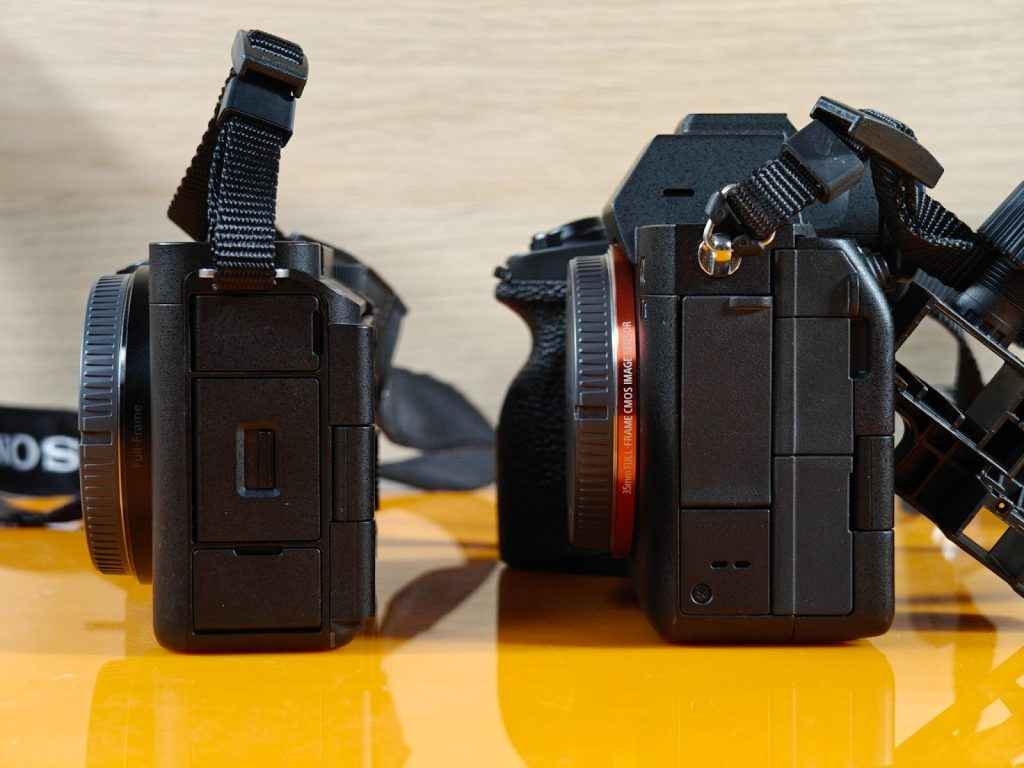
Not all of it is good though from a professional’s point of view. For instance, the compact body obviously leaves little room for a ton of quality-of-life features such as more dials, customisable buttons etc. But what is really grinding my gears is that they could have somehow added a viewfinder as well to make it much more appealing to professionals, which would have been an easy victory for Sony, but in a bid to make it more “vlogger-friendly”, this very useful feature has been dropped. And no, it’s not like there isn’t enough space to do so. The recently launched A7C II and A7C R both have viewfinders and are similar in size to the ZV-E1, AND have the same internals as well, including the 5-axis optical image stabilisation system and dual processors. Okay, rant over. Let’s talk about what it does get.
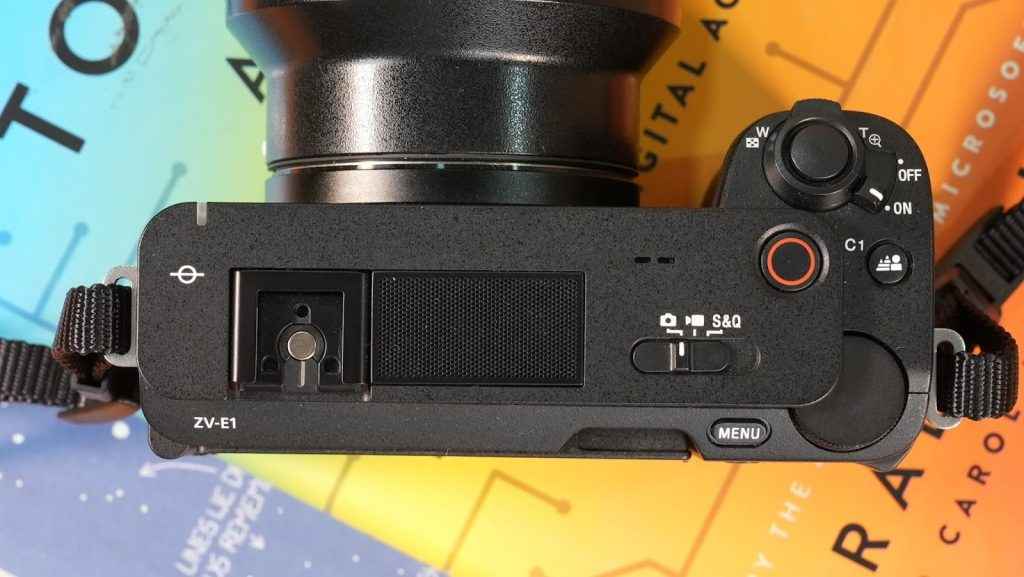

First of all, it has very simple controls as most things can be controlled via the touch screen. On the top side, you get the on/off switch, shutter button and zoom slider all in one cluster. Along with that, you have a slider to switch between the video/photo/S&Q modes. A dedicated big red recording button is also present to start and end video recordings and the C1 (Custom 1) button which by default is set as the Auto Background Defocus button. I will speak about this in detail later. There is also a dial that can be controlled with the thumb which will help you scroll fast if you want to make quick changes to the ISO, shutter speed, and aperture. Lastly, the top side also has a hot shoe mount on the left and the 3-capsule microphone grill in the middle.
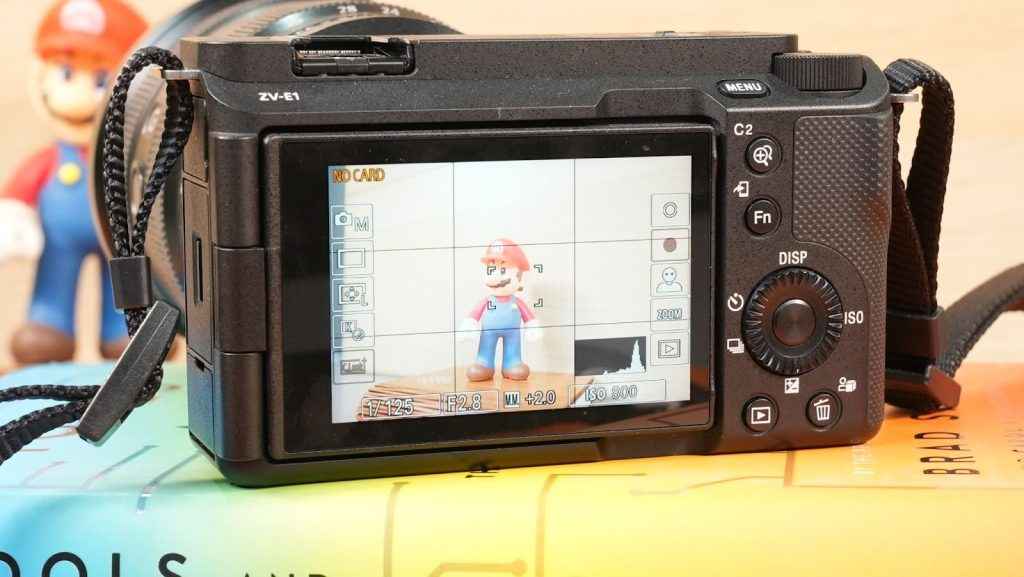

The backside (also the side which would be facing you when you are shooting someone other than you because the world is not full of vloggers) gets a few buttons as well. Definitely not many, but enough to simplify camera operations for a newbie. Starting from the top you get the C2 button, with the Fn button underneath it which can give you quick access to some of your settings. Underneath that, you have another dial with pressable buttons on the dials’ North, South, East and West positions and another button right in the middle which acts as your main select button. And lastly, you have the Play button that shows the photos and videos you have just taken and the Delete button right next to it. The Menu button that gives you access to all your settings is right on the top, on a little ledge between the top side and the back side. The back side obviously also has the display which is of the twist and flip out type which helps you shoot from weird angles and also helps you frame yourself.

The left-hand side houses the doors for your various input and output connections which include the single SD card slot in the middle, the external mic Audio input (3.5 mm port) and USB C data and power port on the top. Then there’s the mini HDMI output port and Audio monitoring (3.5 mm) audio output port, both towards the bottom.
The bottom side as you might expect has the hatch for the Z-type battery and the quarter inch screw mounting point. And the front has a single button to unlock and release the lens.
Overall in in terms of the body and button placement, the camera ends up being pretty ergonomic but I did find the grip a bit too small and smooth. The ZV-E1 lacks the rough leathery texture that the more professional Sony cameras have for a nice tight grip and instead opts for a smoother indented rubber texture.
Sony ZV-E1 Features and Performance – A vloggers delight
The name of the game with the Sony ZV-E1 is simplification. It is designed for those who have the budget to buy reasonably expensive hardware and have the motivation to create good films but don’t have the full-on skillset of a professional. The awesome thing about the ZV-E1 is that it takes away a lot of the technical headaches that beginners might face. To get started with using the camera and creating quality content, all you really need to do is switch it on and start shooting without really knowing the nitty gritty like aperture, shutter speed and ISO. And what makes this camera really stand out is that since it is such a capable platform, you can grow with it, taking over more control for more artistic shots according to your creative vision. It’s almost like it’s tutoring you into being a better film-maker or photographer.
But, how does it do that? Well, it does this with really capable hardware which is the same as the A7-S III, wrapped up with really smart processing and AI features that take over to get the best out of the hardware even if you are a bit of a newbie. And what an awesome range of AI features the ZV-E1 boasts. Once again, all these features are designed in such a way that even a child could operate the camera effectively, but then again, it’s mainly aimed at influencers so it does make sense.
AI-based features
Let’s talk about a few of the more blockbuster features introduced by Sony on the ZV-E1 since those are pretty much the icing on a very capable camera cake.


First up is the image processing engine. Or should I say engines since this camera features two of Sony’s BIONZ XR image processors. Having this additional processor enables a whole range of AI based features that result in some really usable quality-of-life improvements. This new dedicated AI processing engine improves the already great subject-tracking that Sony has been renowned for. Now, not only can you track faces but it will also track the subject if the face is either not visible or the face has turned away. In essence, the camera can recognise the shape of the subject even when the face is not visible and will still maintain focus on the subject.




Due to these improvements in subject recognition, Sony has also introduced two new vlogging-centric features known as Auto Framing and Framing Stabilizer. Auto Framing, if applied correctly and with a few more software-based improvements, can be the single greatest asset to a single vlogger who shoots themself. What it essentially does is that it adds a crop to the frame to a point where the subject (aka the vlogger) is prominent in the frame. You can adjust the crop level in the settings and you have the option of Small, Medium and Large Crop levels to choose from. But here is the interesting bit, you can use this feature to essentially simulate having a dedicated camera person who is following your movements through the frame and zooming in and out based on your distance from the camera. For vloggers who do not have a team or even a dedicated cameraman, the value of this feature cannot be understated.

Framing Stabilizer is pretty similar to Auto Framing and basically helps you keep the subject in frame, at the desired location. For example, if you want the subject to be on the right-hand side of the frame. For vloggers who use a lot of text overlays (or supers) on the frame, this is a pretty neat feature.

Another new trick that the Sony ZV-E1 has over the rest of its brethren is Multi Face Recognition. What this means, is that the camera will automatically adjust the depth of field in a particular frame to make sure more faces are in focus while still trying to provide that bokeh effect in the background.
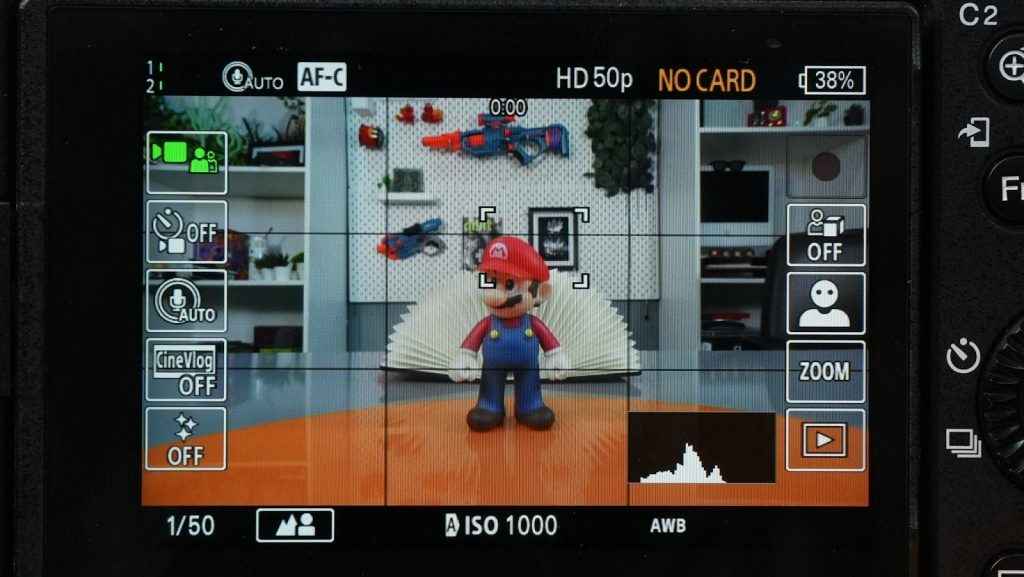

Similarly, we have the C1 button on the top of the camera that helps you get lovely bokeh while shooting thanks to the Background Defocus/Clear function. The ZV-E1 as far as I know is the only camera in Sony’s line-up and maybe even in the market today that has this option but don’t me quote on this. This option simply has one job. And that is to provide the best possible background blurring in a particular lighting situation while maintaining good picture quality as well. Pressing the button basically tells the camera that you’re a novice and don’t know much about how to use the camera or understand the basic principles of photography and takes over for you. It opens up the aperture to give you a nice shallow depth of field and either reduces the ISO or increases the shutter speed to get back to the ideal exposure. Overall, even though I jest, this feature was actually quite fun to use and can even be used by professionals in a pinch. And if you are a professional, please don’t chase me with pitchforks.

Now on to stabilisation. The ZV-E1 features the creme de la creme equivalent in terms of stabilisation. Not only does it have the impressive, 5-axis in-body optical stabilisation employed on the sensor but an impressive array of software-based stabilisation features as well. But let’s start with what we are already familiar with like the vanilla Active Stabilisation mode that has been the go-to mode for hand-held shoots. That mode already did a superb job but it still let some of the shakes through into the shot with every step of the camera operator. Sony has added a level of stabilisation on top of that as well called Dynamic Active Stabilization. In this mode, even major shakes are ironed up quite effectively and if you are actively trying to be stable with your movements, the Shot ends up being extremely smooth. It’s as close to gimbal-like quality, without using a gimbal. The catch though, is a crop. A whopping 30% actually! So definitely use a wide angle lens while using this mode. The Dynamic Active Stabilisation mode is exclusively on the Sony ZV-E1 and even newer full-frame cameras like the A7C II do not feature this…which is a shame.
Cinematic Vlog Mode
And then we get to the Cinematic Vlog Mode. I have been dreading writing about this part mostly because it does not make much sense to me, but the biggest question I have about it is, WHY? I mean I understand what it does and it may be useful to a lot of beginners who do not want to or know how to mess around with post-production but it still baffles me a bit. Oh wait, I haven’t told you what it is yet, so let’s get on that. Cinematic Vlog mode is a mode that makes your vlog look cinematic. Not good enough an explanation for ya? Fair enough. When enabled, this mode adds two black bars on the top and bottom of the frame to artificially change the aspect ratio to the short and wide kind. Basically, it adds a letterboxing effect. You cannot remove these black bars in post which is a shame and there does not seem to be a way to not have them while still using Cinematic Mode. This is my major point of contention with this mode. Because using Cinematic Mode can be really fun for professionals and a useful training tool for beginners. It has various options in terms of the look and feel you are going for and you can change it pretty easily to get an almost frame-by-frame comparison to figure out which look looks best in that particular frame.


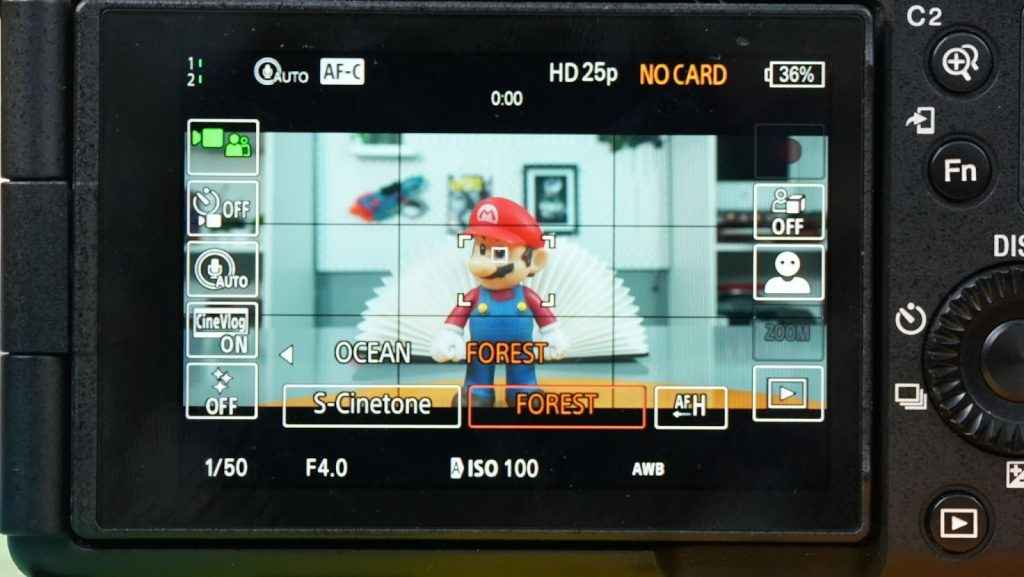
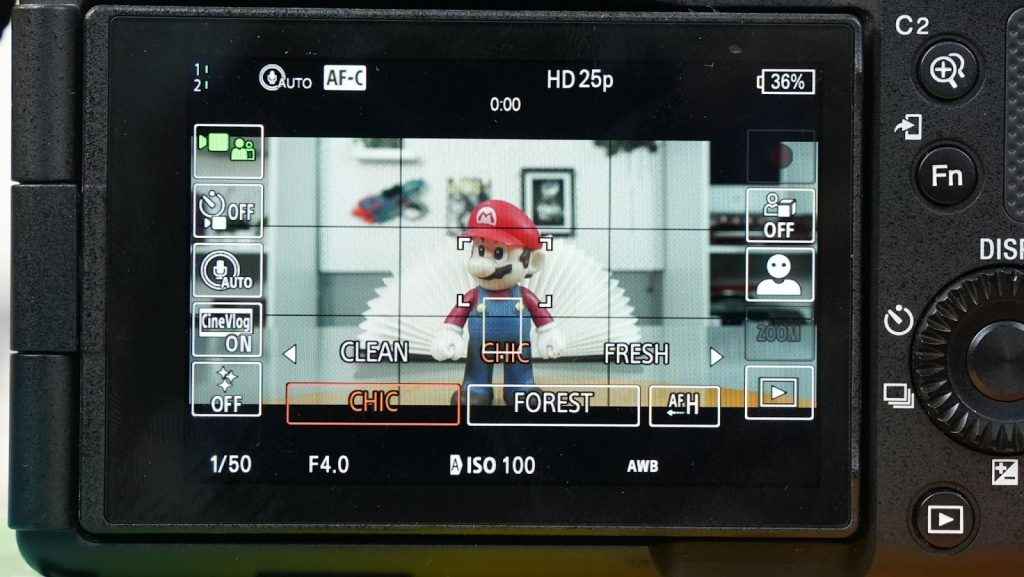


This mode almost Smartphone-ifys the experience and makes the process of adding these “looks” almost akin to adding filters on your smartphone.
Photo and Video Modes
Moving on to the sensor, picture quality and video quality now. What? A camera review where the most important part of the camera is up so late in the review? Blasphemous! Well, there is a very good reason for that! Reason number one is that the sensor is the same as the one you would see on the A7S III and FX3 which have been around for quite a while and everything that can be said about that sensor and its quality has been said. Secondly, we received a pretty battered and bruised ZV-E1 unit from Sony with a fingerprint on the sensor and some mould on the lens. We promptly sent it back to Sony and received it again a couple of days later with a clean sensor and no visible signs of mould. However, when we pointed the camera at bright lights and compared the same with our production A7S III the picture on the ZV-E1 was not nearly as sharp as our A7S III. Which means the ZV-E1, although repaired was still not in prime condition. We suspect it was really abused by its previous users. Nevertheless, we were lucky enough to have a camera with the exact same sensor in the office (A7S III) and we are comfortable vouching for a non-abused version of the sensor in the ZV-E1.

In the meantime let’s take a look at what you can actually do with all of this horsepower. First up is photography. Although the cameras this 12 MP sensor has been put into are not necessarily photography-centric cameras such as the A7S III and FX3, it does a decent enough job and the image only falls apart when zooming in to very small areas. But for the target audience of this camera, the photography performance will more than suffice. If you wish to get higher resolutions you can go for Sony’s Hybrid camera, the A7 IV with a 33 MP sensor or the majorly photography-centric A7R V with a whopping 61MP sensor. But what these cameras offer in terms of photography, the ZV-E1 claws back in video. This is the only camera in Sony’s range that offers 4K video recording at 120p (via a software update). It also shoots 4K at the usual 24p, 25p,30p,50p,60p and 100p. Along with that, it shoots Full HD as well at all the above-mentioned frame rates and along with 240p for a much greater slow-motion effect in post.
Sony ZV-E1 Verdict – A Professional’s Envy
As a camera, the Sony ZV-E1 is very difficult to quantify. It has some features that if implemented across the more professional cameras in Sony’s range, would be highly appreciated by the professionals. But then it lacks some of the features a professional cannot really do without like for instance a dedicated viewfinder, additional custom buttons, dials, joystick etc. And on top of that, it is currently priced at quite an eye-watering Rs 2,14,990 (body only) which makes it quite out of reach for the vlogger and influencer market that it is aimed at. So technically the only vlogger that would consider this camera would be one who is successful enough and generates enough revenue to justify this camera and is one who does not have a dedicated professional to do the shooting for them. Which makes this a very slim and niche subset of a subset.

When I received this camera from Sony, even I was very confused about its place in the market. But as I used it more, and understood more about everything it had to offer, I finally figured out who this camera would be good for. In my opinion, Sony might have unintentionally created the best camera that would be absolutely perfect as a Sony user’s B-Cam. The camera that you can put on the gimbal and leave it there. Okay, let me explain. The camera has very few buttons so changing settings needs to be done via the touch screen and it does not have a viewfinder. Both would be ideal for a gimbal operator. And the cherry on the cake would be the amazing Dynamic Active Stabilisation which combined with the 5-axis stabilisation, a stabilised lens and a gimbal would result in the most eerily smooth video quality out there. So technically it is ideal for certain professional use cases. And of course for the hyper-successful, one-man/woman show vlogger.
Sadly though when I asked some of our Indian professionals if they would consider the ZV-E1, the response was quite underwhelming. The problem I think is the marketing of the ZV-E1. In a bid to make it the ultimate “Vlogging” camera, Sony might have alienated a bigger market that would actually have the money to pay for it. But that’s just a theory, and the end-of-quarter sales figures of the ZV-E1 would prove how correct or utterly wrong I am about this.